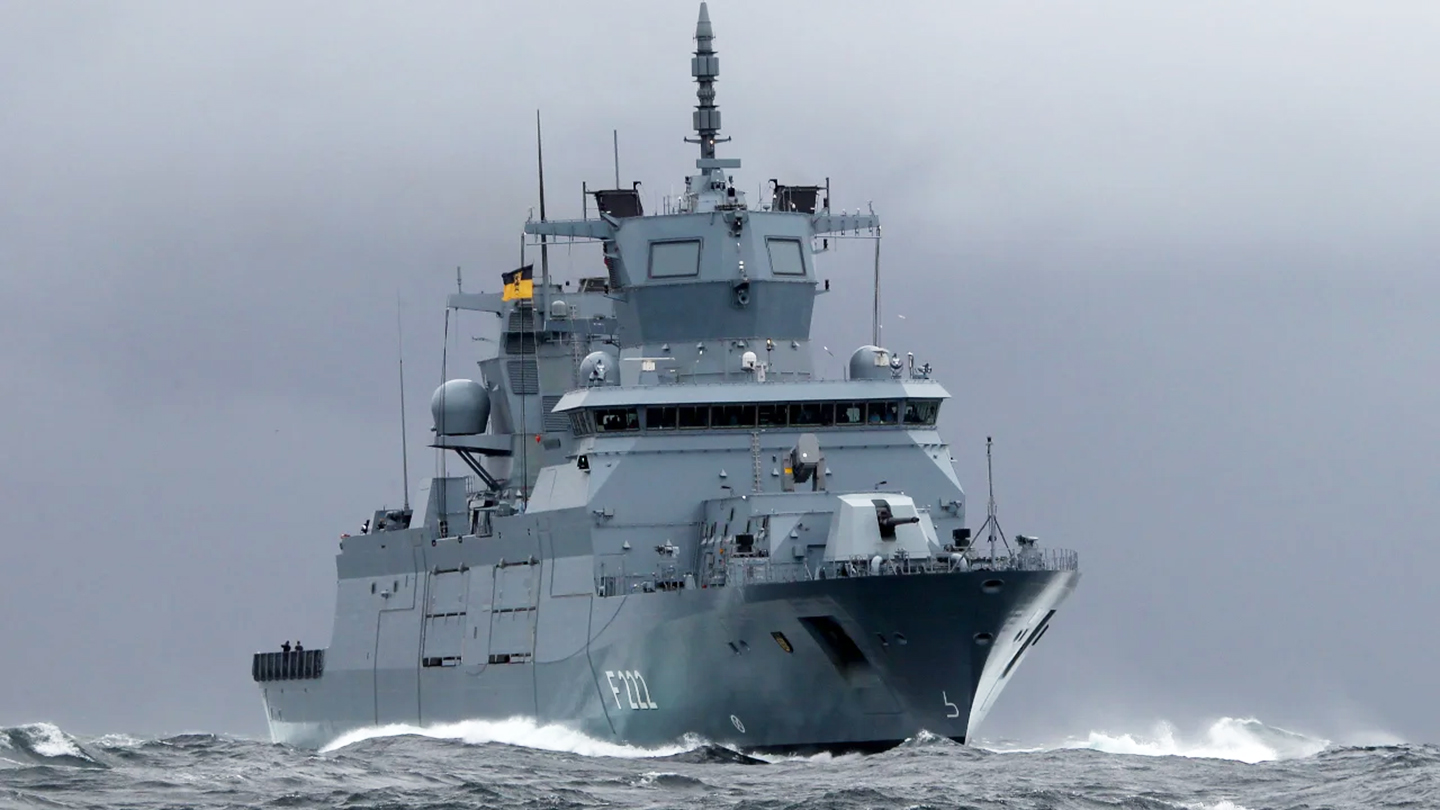A German Navy warship is returning from an extensive deployment to the Indo-Pacific region via the Cape of Good Hope, avoiding a potentially hazardous passage through the Red Sea, a German Ministry of Defense spokesperson has confirmed to The War Zone. The frigate Baden-Württemberg, together with the replenishment ship Frankfurt am Main, will take the long route around Africa, due to the dangers in the Red Sea — primarily the ongoing anti-shipping campaign by Yemen’s Iran-backed Houthi militants.
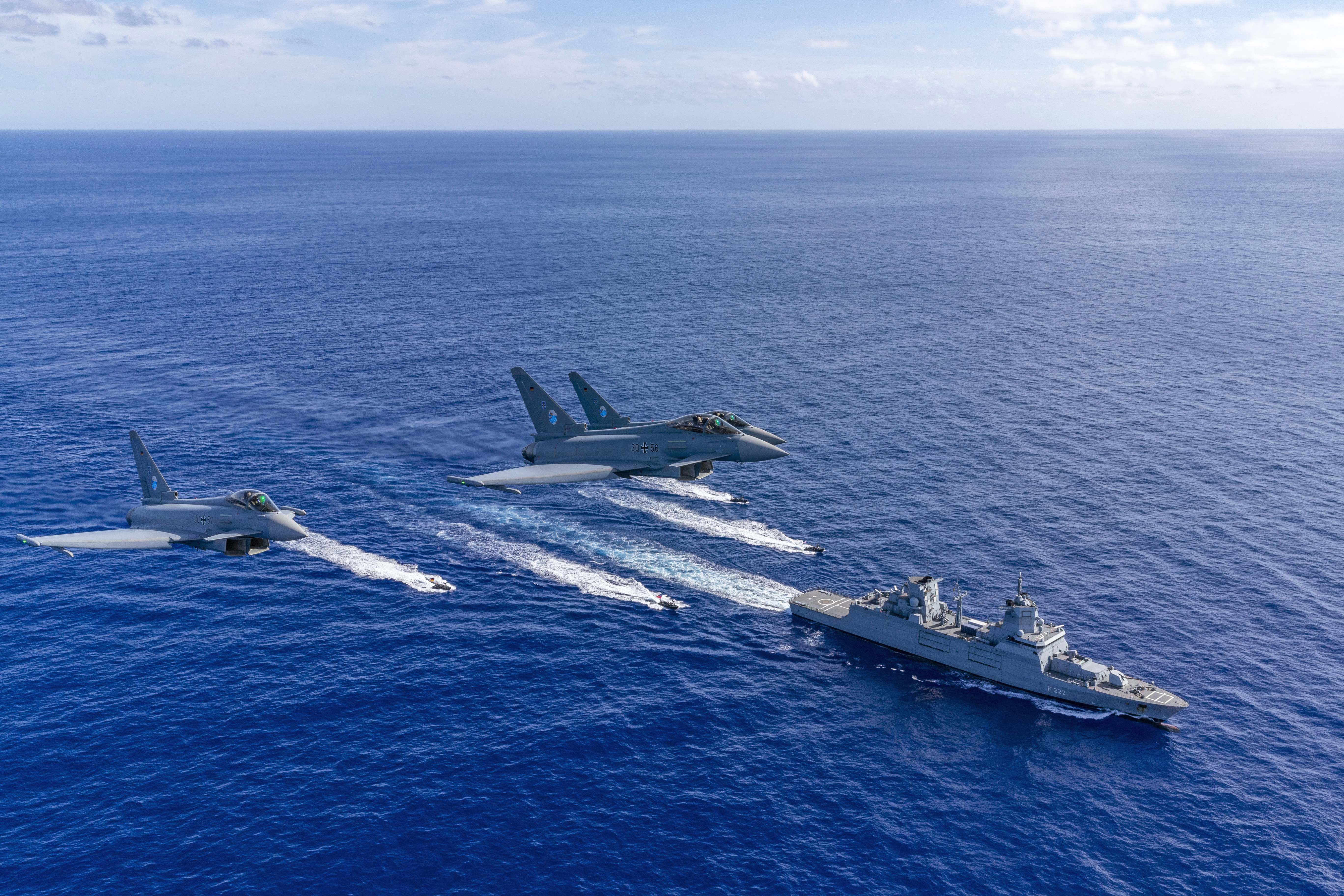
The German Ministry of Defense spokesperson told The War Zone that German Minister of Defense Boris Pistorius decided last week to reroute the two German Navy vessels that form the Indo-Pacific Deployment Task Group, “based on a comprehensive assessment of the threat situation in relation to the air defense capabilities of both ships.”
“Due to the fact that Baden-Württemberg is not designed as a major air defender combat vessel, she is not able to provide an air defense umbrella for extended self-defense against air-breathing threats and to efficiently protect the supply vessel which is in company,” the same spokesperson added, before confirming that both ships had recently departed India.
While the German news magazine Spiegel had reported last week that the vessels would reroute, the source was not revealed and TWZ is, as far as we know, first to get confirmation direct from the German Ministry of Defense.
Taking the much longer route around the Cape of Good Hope will avoid potential attack by Houthi cruise missiles, aerial and maritime drones, and (non-air-breathing) ballistic missiles, but it also paints a concerning picture about the ability of the German Navy — and the allied task forces in the region — to provide adequate defenses.
The German Navy does not currently have a unit in the Red Sea that could provide escort for the two ships, a situation that has existed since the F124 Sachsen class frigate Hessen departed the Red Sea for Germany in April, after two months deployed as part of the European Union’s Aspides mission. You can read more about that here.
For air defense, the Sachsen class is armed with 32 Mk 41 vertical launch system (VLS) cells that are typically loaded with 24 SM-2 Block IIIA and 32 RIM-162 Evolved Sea Sparrow Missile (ESSM) surface-to-air missiles. There are also two RIM-116 Rolling Airframe Missile (RAM) launchers for close-in defense, a single dual-purpose 76mm gun, and a pair of 27mm MLG 27 cannons.

In contrast, the air defense weaponry of the F125 Baden-Württemberg class frigate consists only of two RAM launchers, two 27mm MLG 27 cannons, and several heavy machine guns.
Both F124 and F125 frigates can embark up to two Sea Lynx helicopters, which could potentially also be used to intercept drones in the air, something we have already seen happen in the Red Sea campaign.
For the Baden-Württemberg, a peacekeeping mission would appear to be a better fit than running the gauntlet of potential Houthi attacks. As we have noted before, these odd destroyer-sized ships are built for “stabilization, crisis management, conflict prevention, and international intervention operations.”

“What’s critically lacking here is any sort of area air defense capability,” we wrote back in 2017. “For such a large surface combatant, lacking some sort of air defense capability beyond close-in weapon systems seems outright bizarre, especially considering the ship’s capable sensor suite.”
The Type 702 Berlin class replenishment ship, of which Frankfurt am Main is one of two, has an anti-aircraft armament of four 27mm MLG 27 cannons, several heavy machine guns, plus provision for FIM-92 Stinger man-portable air defense systems (MANPADS), which are not known to be regularly carried.
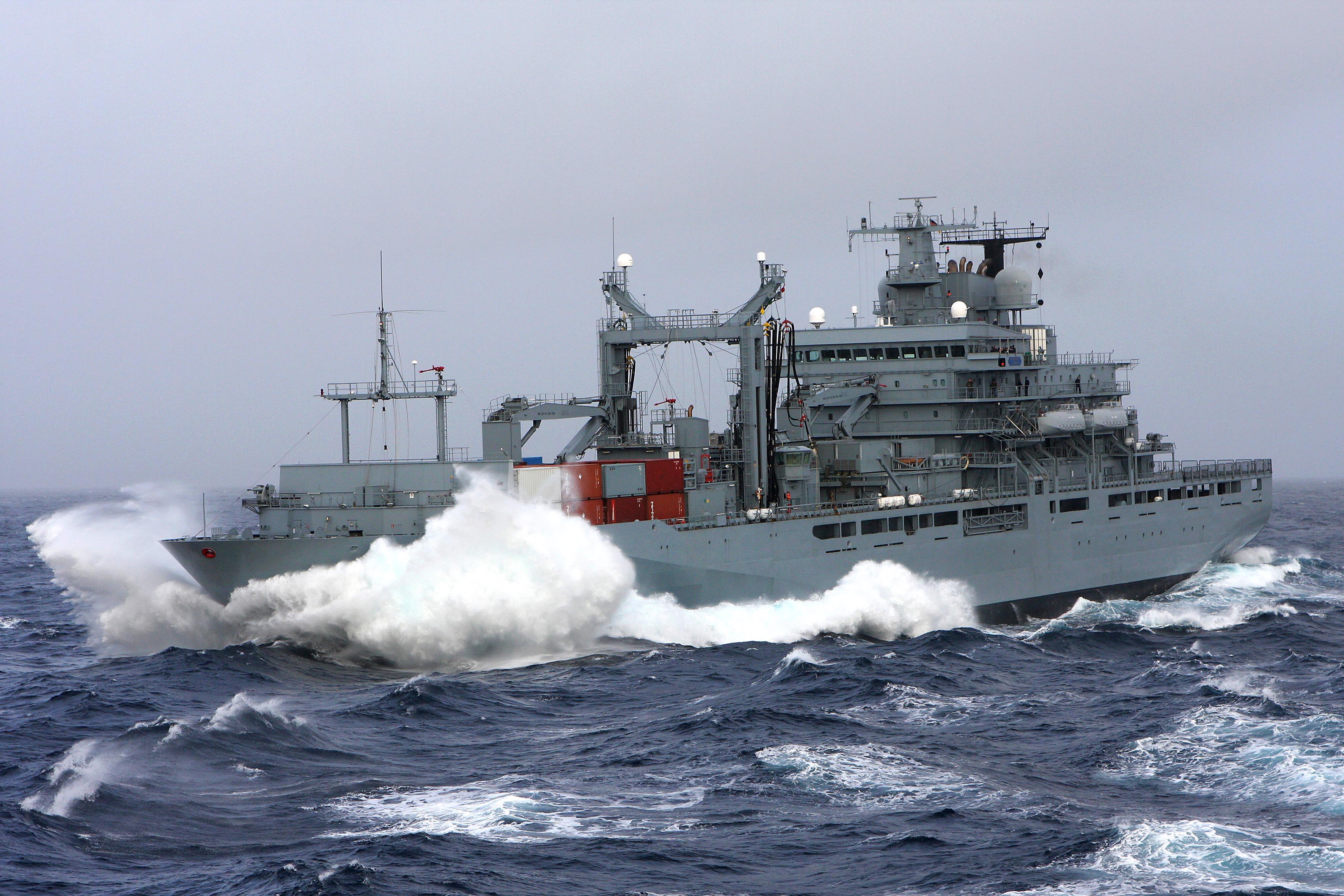
With that in mind, it’s certainly true that the two vessels of the Indo-Pacific Deployment Task Group are entirely inadequately protected against cruise missile and drone threats at any distance beyond the roughly 5.6-mile range of the RIM-116 RAM. While this close-in weapon system could potentially deal with these kinds of threats within this engagement range, it would be too risky to wait for the missile or drone to get so close to the ships before having the option to engage.
This would be even more hazardous in an attack involving multiple cruise missiles and/or drones. Meanwhile, the two ships are entirely defenseless against ballistic missiles, including the anti-ship ballistic missiles (ASBMs) that the Houthis began to use earlier this year.
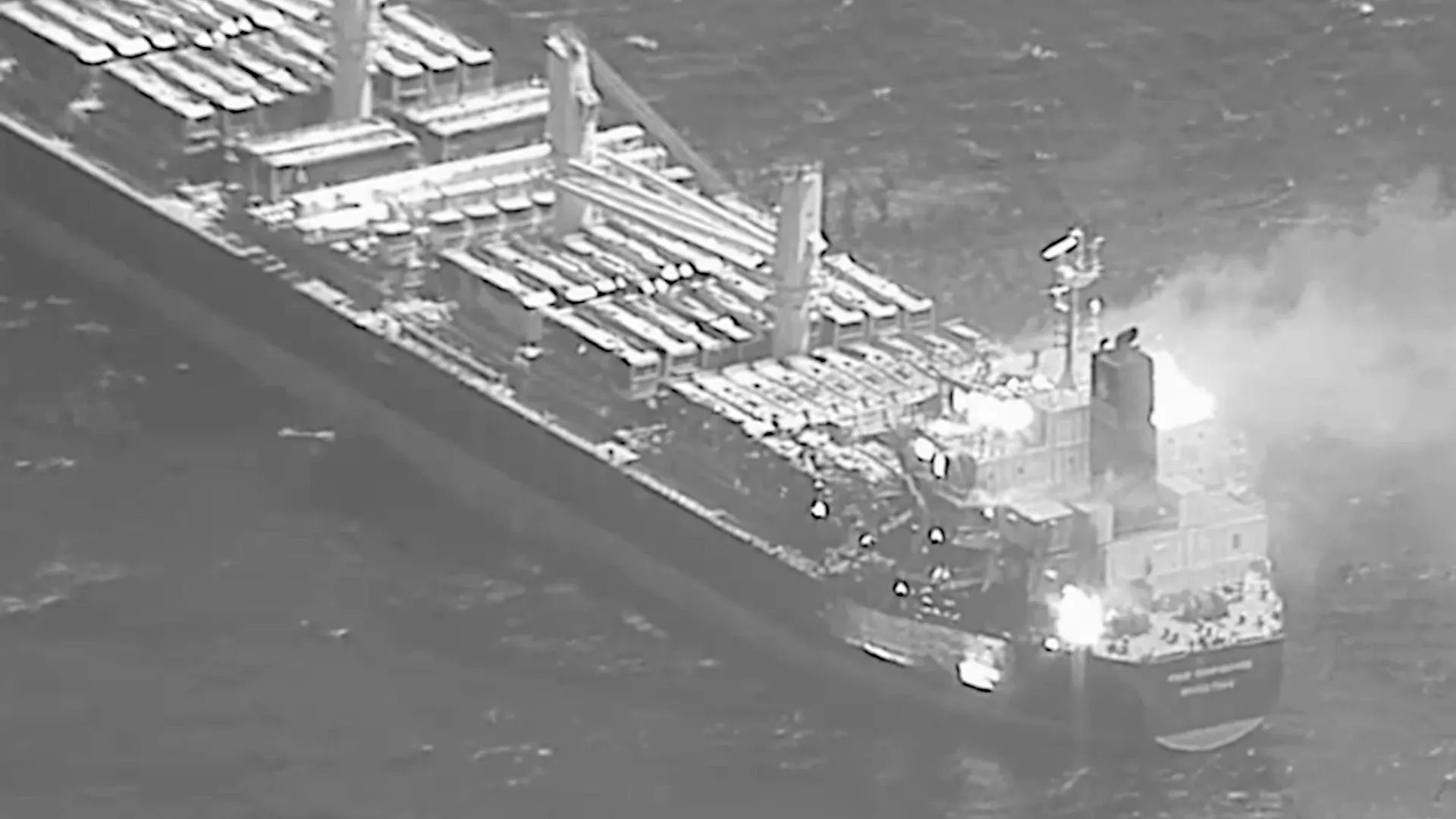
With no German Navy warship in the Red Sea that would be able to offer an enhanced level of air defense protection, it seems the decision was taken to avoid the area, although that does also raise questions about the availability of other allied warships there to provide the required air defense capabilities.
According to the Spiegel, “other nations operating with warships [in the Red Sea] reported that escort was currently not possible.”
Two separate international task forces have been set up to defend Red Sea shipping. The U.S.-led Operation Prosperity Guardian, which The War Zone was the first to write about, was established last December. The European-led Operation Aspides followed two months later.
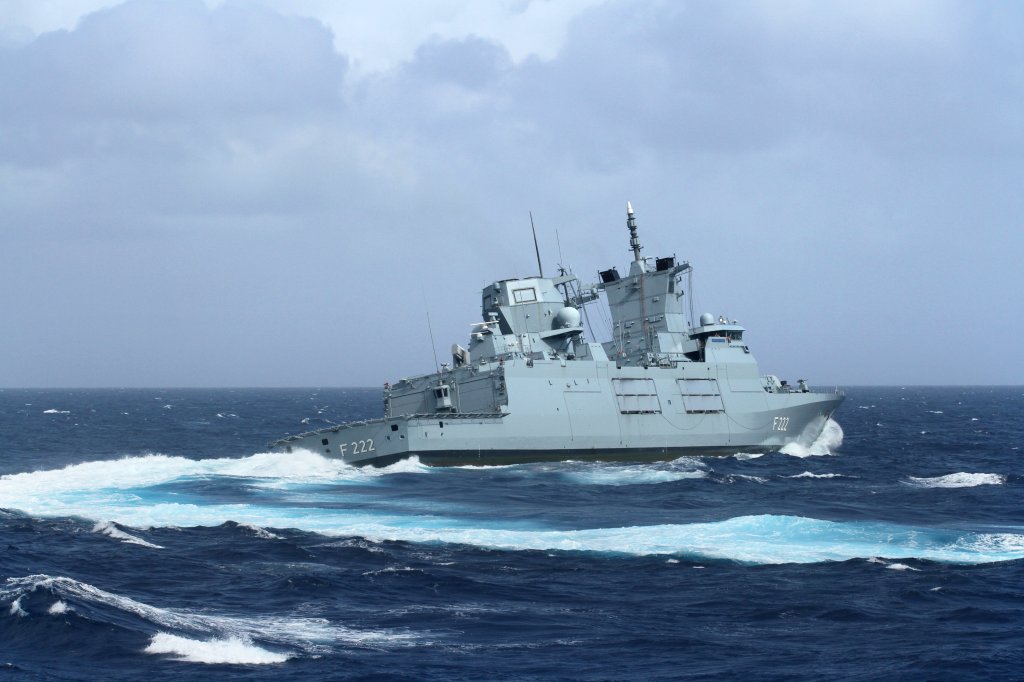
This latest development does, however, suggest that these missions are less resourced overall than they were in the past. A contributing factor may also be the increased focus on Iran, especially for the United States right now.
These operations have been broadly a tactical success, but there have also been questions about their long-term viability, also in relation to the prolonged stress that kinetic engagements put on stocks of precious weapons. In the meantime, the Houthi attacks have not stopped and the militants continue to be armed by Iran, while international shipping remains disrupted.
While coalition vessels have been credited with shooting down numerous Houthi cruise missiles, drones, and ballistic missiles — using a very wide variety of weapons and non-kinetic systems to do so — there have also been incidents when these warships’ air defenses haven’t worked as well as planned.
The Hessen “repelled four attacks by the Houthi rebels,” according to the German Armed Forces, and also carried out 18 close escort missions, guiding “27 merchant ships with a total tonnage of 1.3 million tons safely through the danger zone.”
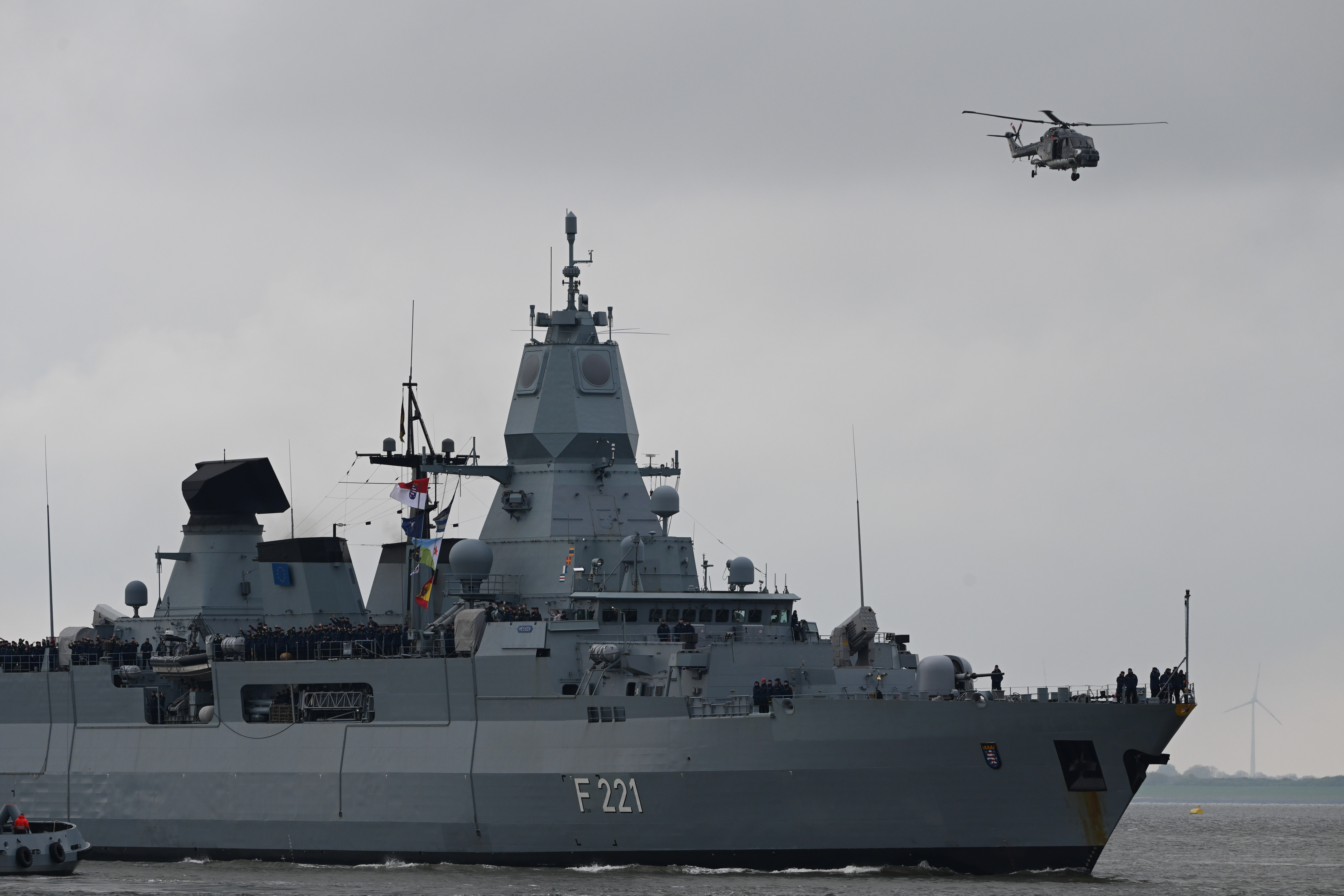
But as well as shooting down two Houthi drones using its 76mm gun and RIM-116 RAM, the frigate also accidentally fired on an American MQ-9 Reaper drone while confused about its identity.
More embarrassing was the performance of the Royal Danish Navy, whose frigate Iver Huitfeldt suffered radar and air defense missile system failures during a Houthi drone attack.
In particular, it was reported that the warship was unable to fire its RIM-162 ESSM for a half-hour period, while “up to half” of the rounds fired from the twin 76mm guns detonated too early and close to the ship.
Nevertheless, the Iver Huitfeldt was able to shoot down four of the incoming drones, while the remainder were tackled by other vessels. The Danish warship also saw its deployment cut short and contributed to the sacking of the head of the Danish Armed Forces.
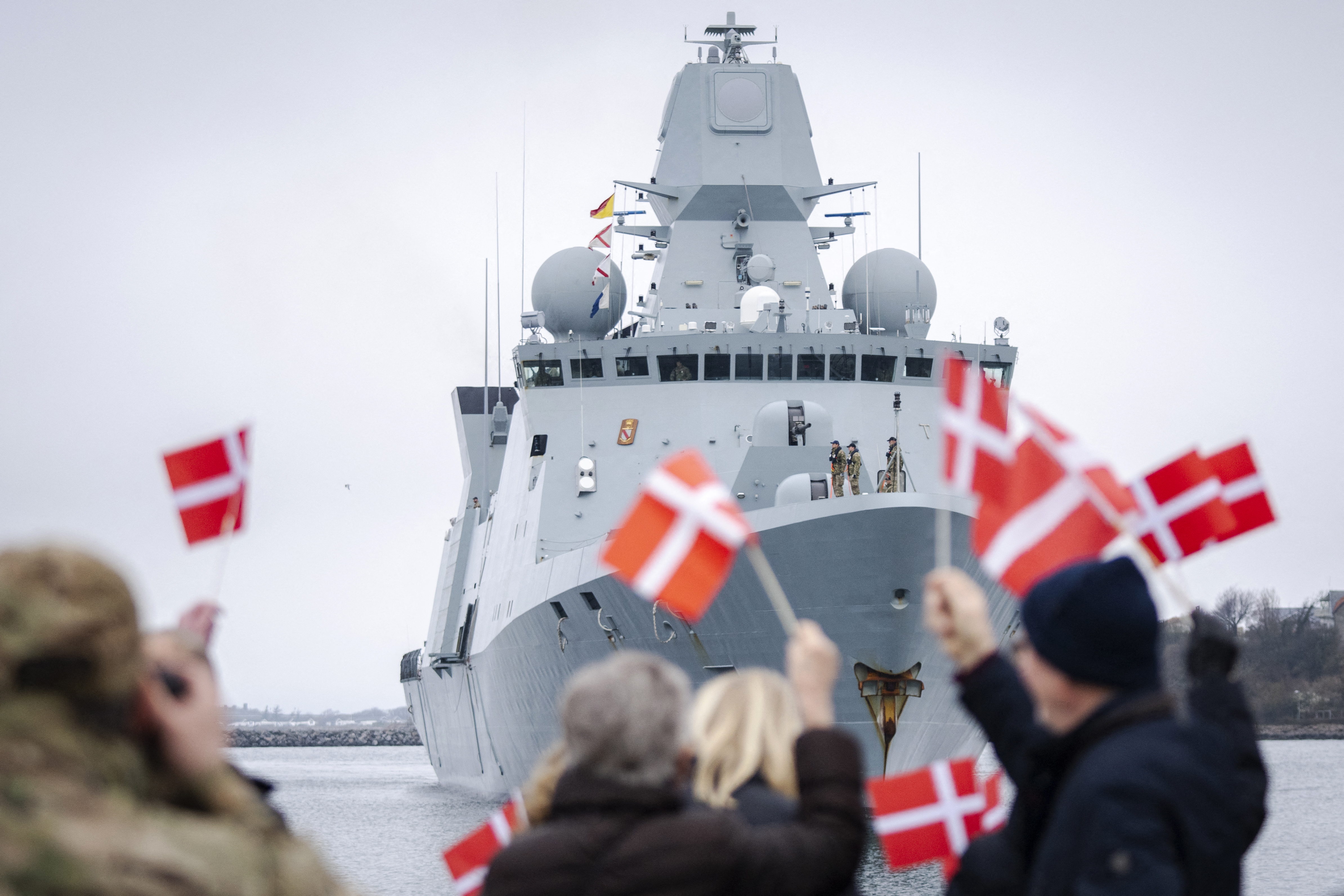
These incidents demonstrate the very real challenges of countering the Houthi anti-shipping campaign, something that is also putting considerable demands on available weapons stocks.
At the same time, while the losses inflicted on shipping by the Houthis have been limited, their campaign has continued, and it has forced many commercial shipping companies to avoid the Red Sea route. This has knock-on effects on the global supply chain, driving up costs and adding delays.
The Houthis have even extended the scope of their campaign, with new tactics and an extended radius over which they can launch their attacks. This only increases the burden on the multinational task forces, which require more warships and munitions to counter the militants’ attacks.
The War Zone recently examined reports that the Houthis are also receiving help from Russia in their attacks.
After sailing from there toward South Africa and then heading north, the Baden-Württemberg is expected to enter the Mediterranean, to join the United Nations Interim Force in Lebanon or UNIFIL peacekeeping mission, while Frankfurt am Main will return to Germany.

In the meantime, Germany is continuing to participate in the European-led Operation Aspides mission in the Red Sea, with a contingent of staff at the Force Headquarters and on board the Italian flagship. In addition, Germany is providing an undisclosed aircraft for long-range reconnaissance in support of the Aspides mission. The aircraft is flown by a civilian company but operated partly by military personnel.
“Germany will continue to make substantial contributions to Aspides,” the spokesperson from the German Ministry of Defense told TWZ. “The contribution of warships at Aspides must be weighed against other operational commitments of the German Navy and is closely coordinated with our partners and the European Union. This process is ongoing and has not yet been finalized.”
The same concerns that TWZ and others have raised about the missing air defense capability of the F125 Baden-Württemberg class have driven the decision for one of these frigates to avoid the Red Sea. As well as once again challenging the logic of the design of this warship, this is another reminder of the continuing threat posed to vessels of all kinds as the Houthis continue their anti-shipping campaign.
The War Zone Senior Staff Writer Howard Altman contributed to this report.
Contact the author: thomas@thewarzone.com
